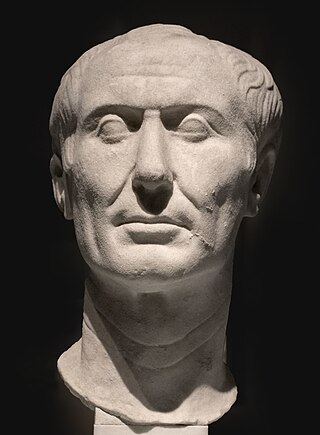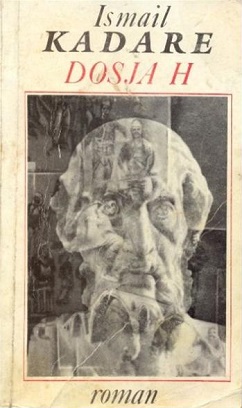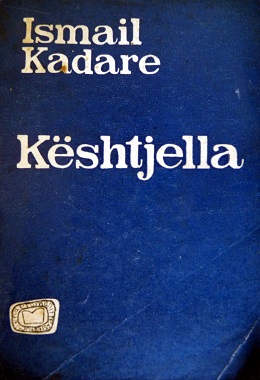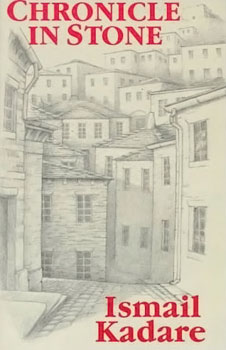
Enver Halil Hoxha was an Albanian communist revolutionary and politician who was the leader of Albania from 1944 until his death in 1985. He was the First Secretary of the Party of Labour of Albania from 1941 until his death, a member of its Politburo, chairman of the Democratic Front of Albania, and commander-in-chief of the Albanian People's Army. He was the twenty-second prime minister of Albania from 1944 to 1954 and at various times was both foreign minister and defence minister of the country.

Albanian culture or the culture of Albanians is a term that embodies the artistic, culinary, literary, musical, political and social elements that are representative of ethnic Albanians, which implies not just Albanians of the country of Albania but also Albanians of Kosovo, North Macedonia and Montenegro, where ethnic Albanians are a native population. Albanian culture has been considerably shaped by the geography and history of Albania, Kosovo, parts of Montenegro, parts of North Macedonia, and parts of Northern Greece, traditional homeland of Albanians. It evolved since ancient times in the western Balkans, with its peculiar language, pagan beliefs and practices, way of life and traditions. Albanian culture has also been influenced by the Ancient Greeks, Romans, Byzantines and Ottomans.

Ismail Kadare was an Albanian novelist, poet, essayist, screenwriter, and playwright. He was a leading international literary figure and intellectual. He focused on poetry until the publication of his first novel, The General of the Dead Army, which made him famous internationally.

Mehmet Ismail Shehu was an Albanian communist politician who served as the Prime Minister of the People's Socialist Republic of Albania from 1954 to 1981. He was known as a close confidant of Enver Hoxha and served in various high-ranking positions in the government.

The terms enemy of the people and enemy of the nation are designations for the political opponents and for the social-class opponents of the power group within a larger social unit, who, thus identified, can be subjected to political repression. In political praxis, the term enemy of the people implies that political opposition to the ruling power group renders the people in opposition into enemies acting against the interests of the greater social unit: society, the nation, etc.

The Party of Labour of Albania (PLA), also referred to as the Albanian Workers' Party (AWP), was the ruling and sole legal party of Albania during the communist period (1945–1991). It was founded on 8 November 1941 as the Communist Party of Albania but changed its name in 1948 following a recommendation by Joseph Stalin. The party was dissolved on 13 June 1991 and succeeded by the Socialist Party of Albania and the new Communist Party of Albania. For most of its existence, the party was dominated by its First Secretary, Enver Hoxha, who was also the de facto leader of Albania from 1944 until his death in 1985.
Albanian literature stretches back to the Middle Ages and comprises those literary texts and works written in Albanian. It may also refer to literature written by Albanians in Albania, Kosovo and the Albanian diaspora particularly in Italy. Albanian occupies an independent branch within the Indo-European family and does not have any other closely related language. The origin of Albanian is not entirely known, but it may be a successor of the ancient Illyrian language.

The File on H. is a novel by the Albanian author Ismail Kadare. It was first published in Albanian in 1981 under the title Dosja H. Jusuf Vrioni translated the work to French in 1989 as Le Dossier H. David Bellos translated the French version into English in 1996. Both Kadare and Bellos have received praise in the English speaking world for the edition.
David Bellos is a British academic, translator and biographer. He is the Meredith Howland Pyne professor of French and comparative literature at Princeton University in the United States, and was director of its translation and intercultural communication programme from 2007 to 2019.
Bilal Xhaferi, often referred to as Bilal Xhaferri, was an Albanian writer and political dissident against the Albanian communist regime. He is seen as the representative poet of the Albanian Chameria.

The Siege is a historical novel by Albanian author Ismail Kadare, first published in 1970 in Tirana as Kështjella. It concerns the siege of an unnamed Albanian fortress by troops of the Ottoman Empire during the time of Skanderbeg, loosely based on the historical Siege of Krujë (1450). It was translated into French by Jusuf Vrioni and then from French into English by David Bellos. The novel was partly rewritten by Kadare after he moved from Albania to France in 1990; most of the changes were references to the Christian beliefs of the Albanian garrison, which had been cut from the original version by the communist censors.

Chronicle in Stone is a novel by Albanian author Ismail Kadare. First published in Albanian in 1971, and translated into English by Arshi Pipa in 1987, it describes life in a small Albanian city during World War II. A revised translation by David Bellos was published in 2007.
The League of Writers and Artists of Albania is a non-profit organization founded with the goal of promoting and advancing the literary and artistic creativity of Albanian writers and artists, as well as to assess and reassess the finest works of art in the following disciplines: music, painting, sculpture and literature. The organization actively promotes the originality and inventiveness of emerging young talents, while preserving Albanian traditional and modern values, in line with the best examples of literary and artistic values throughout the world.
Kasëm Trebeshina was an Albanian member of national resistance during World War II part of the National Liberation Movement, an actor, translator, communist prosecutor and writer. He was one of the founders of the notorious communist secret police Sigurimi.
Helena "Elena" Kadare is an Albanian screenwriter, translator and author of short stories and novels. One of the latter, 1970's Një lindje e vështirë, is the first novel by a woman to have been published in Albania. A Woman from Tirana (1990) is the novel of Kadare's that is perhaps her most widely read.

Besiana Kadare is an Albanian diplomat. She served as the Ambassador Extraordinary and Plenipotentiary Permanent Representative of Albania to the United Nations, a vice president of the United Nations General Assembly for its 75th session, and Albania's ambassador to Cuba. Albania sat on the UN Security Council for a two-year term, 2022–23. She was formerly from 2011 to 2016 Albania's Ambassador Extraordinary and Plenipotentiary and Permanent Delegate to the United Nations Educational, Scientific and Cultural Organization (UNESCO) in Paris. She is the daughter of writers Helena Kadare and Ismail Kadare.

The Palace of Dreams is a 1981 novel by the Albanian writer Ismail Kadare. Set ostensibly in the Ottoman Empire, but in a deliberately imprecise past shaded by myth and intended to represent the modern totalitarian state, The Palace of Dreams follows the rapid rise of Mark-Alem, a young Ottoman Albanian related to the powerful Köprülü family, within the bureaucratic regime of the title palace, a shady ministry whose objective is to gather, examine and interpret the dreams of the empire's subjects in order to uncover the master-dreams, which are believed to show the future destiny of the Sultan and the state.

The Successor is a 2003 novel by the Albanian writer and inaugural International Man Booker Prize winner Ismail Kadare. It is the second part of a diptych of which the first part is the novella Agamemnon's Daughter. The diptych is ranked by many critics among the author's greatest works.

The Blinding Order is a short novel written by Ismail Kadare in 1984 and published in 1991, shortly after the collapse of the hoxhaist regime in Albania. Set in the 19th-century Ottoman Empire, The Blinding Order is a parable about the use of terror by authoritarian regimes, and it is linked through its main subplot to the author's banned 1981 novel The Palace of Dreams.
The following is a list of the publications of Albanian writer Ismail Kadare (1936–2024).














